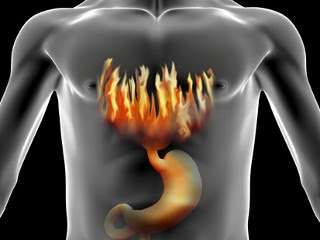 Lactic acidosis is a medical condition caused mainly due to the excess lactic acid in your blood. This may produce several severe symptoms, which, if left untreated, may become life threatening. It is important to identify the exact cause to find the right treatment for lactic acidosis. Keep reading to discover more about some of the most common causes of lactic acidosis and some possible lactic acidosis treatment options.
Lactic acidosis is a medical condition caused mainly due to the excess lactic acid in your blood. This may produce several severe symptoms, which, if left untreated, may become life threatening. It is important to identify the exact cause to find the right treatment for lactic acidosis. Keep reading to discover more about some of the most common causes of lactic acidosis and some possible lactic acidosis treatment options.
What Is Lactic Acidosis?
In order to find the most appropriate treatment for lactic acidosis, you need to understand exactly what it is and what causes it in the first place. Acidosis means "too much acid in your body", and in lactic acidosis, it refers to the buildup of lactic acid in your bloodstream. The cells in your body use glucose to make lactic acid, but sometimes, they make it faster than your body can actually metabolize it. The acid keeps building in your body and leads to lactic acidosis. Here are some specific causes:
- You may witness this condition due to several different disorders, but it usually indicates a metabolic derangement in your acid-base system.
- You may experience this condition as a result of a severe infection.
- It could be a rare side effect of certain medications, such as metformin and HIV drugs in the NRTI or nucleoside reverse transcriptase inhibitor, hindering the breakdown of lactic acid and causing lactic acidosis.
- Other causes include malfunctioning liver, which usually happens when you have a fatty liver that fail to break down lactate properly.
When lactic acid builds up in your system, it causes several symptoms, including unexplained tiredness, vomiting, nausea, rapid breathing, abnormal heartbeat, blue hands and feet, weight loss and shortness of breath. You need to inform your healthcare provider of your symptoms so they could select the best treatment of lactic acidosis.
Lactic Acidosis Treatment
In case of severe lactic acidosis, it is important to take the patient to the hospital without wasting any time. The doctor will select a proper treatment of lactic acidosis to stabilize the patient's condition. If you're in the hospital for lactic acidosis treatment, your healthcare provider will first consider how severe your symptoms are and if you're also experiencing nausea, vomiting and difficulty breathing. If that's the case, they may administer intravenous fluids to help change your blood chemistry. Your doctor may decide to use a machine to make it easier for you to breathe. If you're a patient of lactic acidosis and are looking for a suitable lactic acidosis treatment, you should pay attention to the following things first.
1. Know Your Diagnosis Methods
Go see your doctor if you notice any symptoms related to lactic acidosis.
- They will perform a physical exam to confirm you are suffering from this condition or not.
- They may even order a CT scan or ultrasound of your liver to see if it is enlarged.
- They may also ask for other blood tests to measure your electrolyte level, liver enzymes, blood pH and lactate level.
2. Find the Best Treatment
Be sure to discuss different treatment options with your doctor. What lactic acidosis treatment is right for you usually depends on your lactate value. If the value is more than 2mmol/dL but is less than 5mmol/dL, your doctor will persist with your HIV drugs only. They will, however, stop your HIV drugs when the value goes beyond 5mmol/dL – this is only when you also have specific symptoms of lactic acidosis. Your doctor will recommend you to be admitted to the hospital if your value is higher than 10mmol/dL – it usually indicates a medical emergency.
3. Discuss HIV Treatment with Doctor
If you're taking HIV drugs, you should never stop using them without informing your doctor because HIV drug plays a big role in lactic acidosis. Even if it is necessary to stop HIV drugs, it is still important to talk to your doctor who will explain how to stop your HIV drugs properly. They will also explain when you can start them again and which ones you have to take when you start the lactic acidosis treatment again. It is usually important to change your HIV treatment regimen if your lactate levels are low and you don't have any lactic acidosis symptoms.
4. Get Enough Nutrition
It is important to be constantly in touch with your doctor and ask them about what they think about your progress. Sometimes, they may even consider giving you coenzyme Q, riboflavin (vitamin b2), L-carnitine, thiamine (vitamin B1), or vitamins K, E and C to treat your symptoms. It is worth mentioning though that many people have seen positive results after using these vitamins and supplements, but there is no guarantee that they will work in your case as well.
5. Take Care of Yourself
You need to keep in mind that lactic acidosis will eventually cause certain liver related issues, so it is of immense importance that your doctor keeps a close eye on your liver function while you're using a lactic acidosis treatment. You're more likely to develop a liver complication if you have a history of a liver problem or heavy alcohol use. You don't usually need to perform lactate tests so long as you don't experience any abovementioned lactic acidosis symptoms.
It is equally important to understand that lactic acidosis can be the outcome of another underlying medical condition such as kidney failure, liver failure, cancer or AIDS. Therefore, your doctor should check and treat these conditions to help you get rid of lactic acidosis.